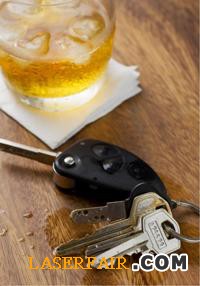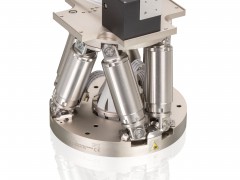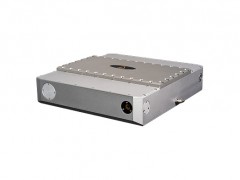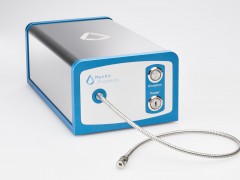
In-car laser-based system developed to curb drink driving
source:www.electrooptics.com/
keywords: Alcohol Detection System laser
Time:2015-06-11
A system that will prevent a car from moving if the driver is drunk is being developed by the US government. The technology, which could be installed into vehicles in the next five years, uses lasers and infrared light to determine a person’s blood alcohol level in the less than one second.
The safety system is being developed as part of the Driver Alcohol Detection System for Safety (DADSS) programme, a research partnership between the US Department of Transportation’s National Highway Traffic Safety Administration (NHTSA) and an industry consortium, in a bid to develop technology that will prevent alcohol-impaired drivers from operating their vehicles while under the influence.


At the beginning of June, NHTSA displayed prototypes of the two technologies under development – one that detects alcohol levels by touch, another by sensing the driver’s breath – to members of US congress, in order to show progress in maturing them for automotive use.
The breath-based technology pulls the driver’s exhaled breath into a sensor located in the driver’s side door or on the steering wheel, and a beam of infrared light is then directed at the molecules in the breath. Because carbon dioxide and alcohol molecules absorb different amounts of light, the sensor can compare the two, and is able to measure alcohol levels even at very low concentrations.
If the proportion of alcohol molecules to CO2 molecules is above a certain range, it indicates an illegal blood alcohol level.
The scientists working on the device have also engineered the cabin airflow to ensure that only the driver’s breath is tested.
The touch-based system uses infrared tissue spectroscopy to determine the driver’s blood alcohol level. Touch sensors located on the ignition button or the gearstick shine a beam of light onto the person’s finger, which penetrates through the skin into blood capillaries. The system then measures the light intensity of reflected particles to identify and analyse the quantity of alcohol molecules in the blood.
Last year, researchers from the Military University of Technology in Warsaw, Poland developed a laser device that can detect alcohol in cars. However, unlike the DADSS instrument which will be installed inside of a car, this system is placed on the side of the road and scans passing cars at a distance.
If alcohol vapour is detected in the car, a photo of the car, including its number plate, is transmitted to the police, who can then take further action by stopping the car and checking for signs of alcohol using conventional tests.
The system is also capable of recognising when passengers have been drinking but the driver has not, or if alcohol had been spilled in the vehicle.
The more recent DADSS programme is being overseen by a team of independent engineers and scientists. It is expected to be completed within the next five years, which would support the introduction of the technologies into the vehicle fleet, although it will be tested by independent experts before it is made available as a consumer option.
‘Public-private research partnerships like DADSS have led to innovations that enhance our everyday lives, such as the Internet, GPS and the microchip. Now we have our sights set on inventing a world without drunk driving,’ said Rob Strassburger, president and CEO of the Automotive Coalition for Traffic Safety (ACTS). ‘There’s more work to be done, but through this broad coalition of support, we are driven to successfully complete this life-saving technology.’
‘Education, awareness and enforcement have succeeded in dramatically reducing drunk driving fatalities, but the advanced technology of DADSS brings enormous potential to save even more lives,’ commented US Transportation Secretary Anthony Foxx.
MOST READ
- RoboSense is to Produce the First Chinese Multi-beam LiDAR
- China is to Accelerate the Development of Laser Hardening Application
- Han’s Laser Buys Canadian Fiber Specialist CorActive
- SPI Lasers continues it expansion in China, appointing a dedicated Sales Director
- Laser Coating Removal Robot for Aircraft
PRODUCTS
 FISBA exhibits Customized Solutions for Minimally Invasive Medical Endoscopic Devices at COMPAMED in
FISBA exhibits Customized Solutions for Minimally Invasive Medical Endoscopic Devices at COMPAMED in New Active Alignment System for the Coupling of Photonic Structures to Fiber Arrays
New Active Alignment System for the Coupling of Photonic Structures to Fiber Arrays A new industrial compression module by Amplitude
A new industrial compression module by Amplitude Menhir Photonics Introduces the MENHIR-1550 The Industry's First Turnkey Femtosecond Laser of
Menhir Photonics Introduces the MENHIR-1550 The Industry's First Turnkey Femtosecond Laser of Shenzhen DNE Laser introduced new generation D-FAST cutting machine (12000 W)
more>>
Shenzhen DNE Laser introduced new generation D-FAST cutting machine (12000 W)
more>>
